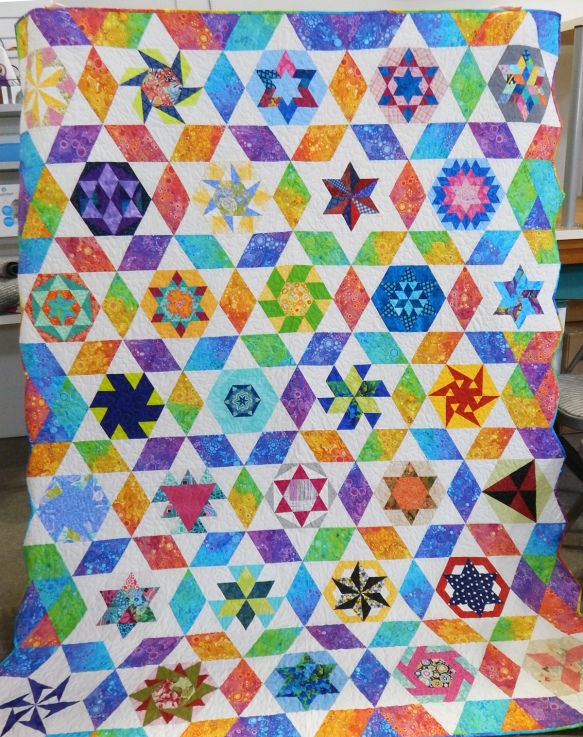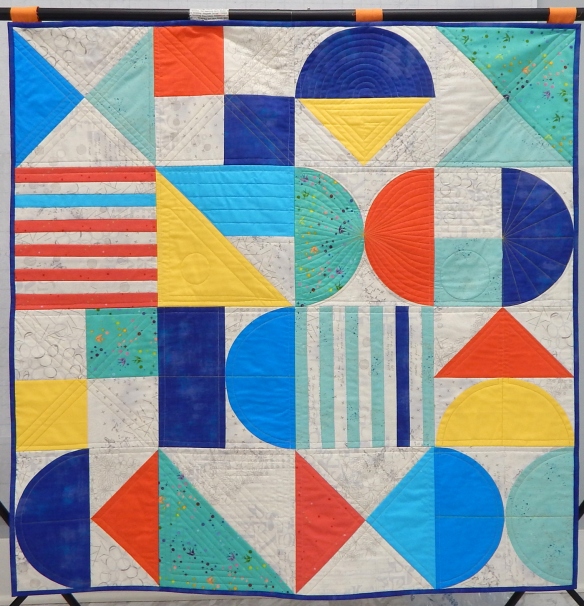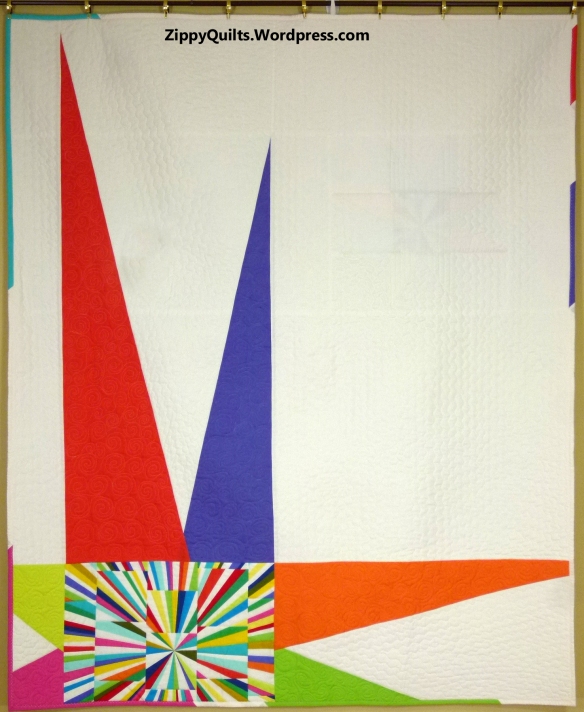Last year’s Block of the Month (BOM) at Studio Stitch was a series of complex hexagons made with the Jaybird Quilts rulers. You can read about the woman who designed this way to make them in my earlier post here.
I enjoyed making the blocks and most weren’t very difficult with the use of the rulers and Justiann’s good instructions.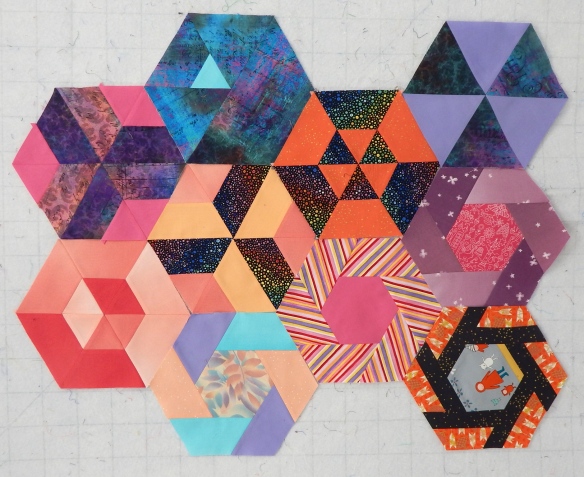
They looked great when I put a few up on the design wall to view them together.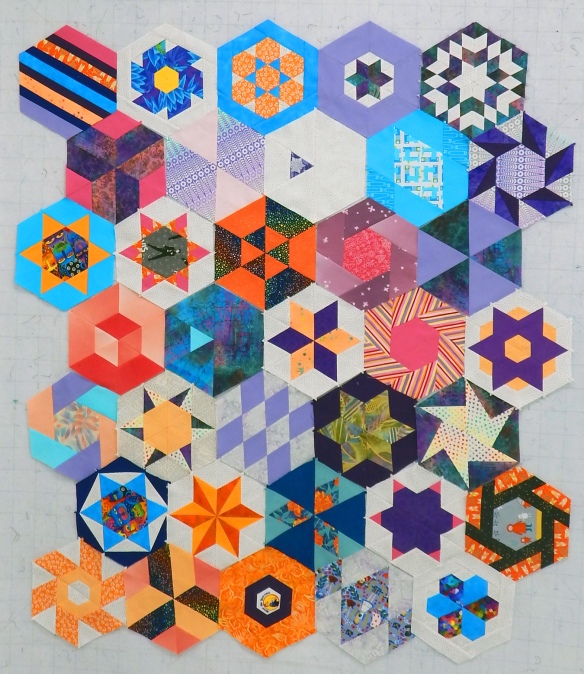
It was my intention to make the quilt using the Kaufman Effervescence fabric, like Holly did here:
The fabric was ordered by the shop months ahead of time, but it still hadn’t arrived when the BOM classes were finished. I auditioned several other fabrics and finally settled on black and white with metallic accents. Here’s the finished quilt. (There were several blocks left over.)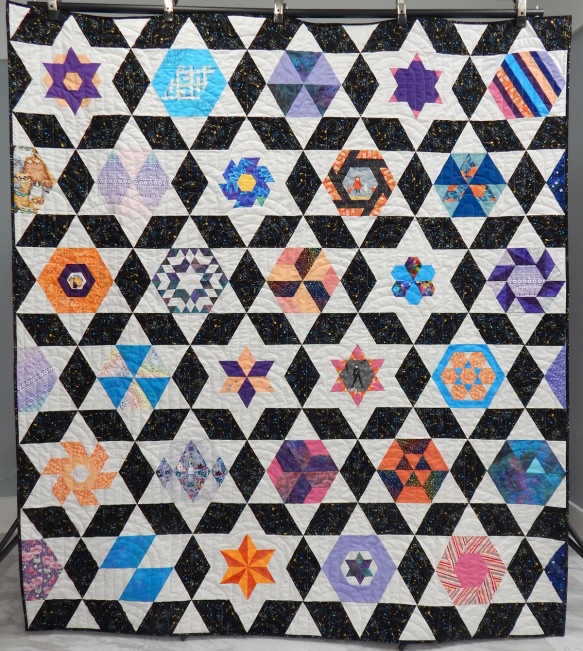
I’m not crazy about it. In this instance, I think my choice of secondary fabrics does nothing to enhance the blocks. However, a done quilt is a good quilt so I’m on to the next project.
Had any quilts like that lately?
